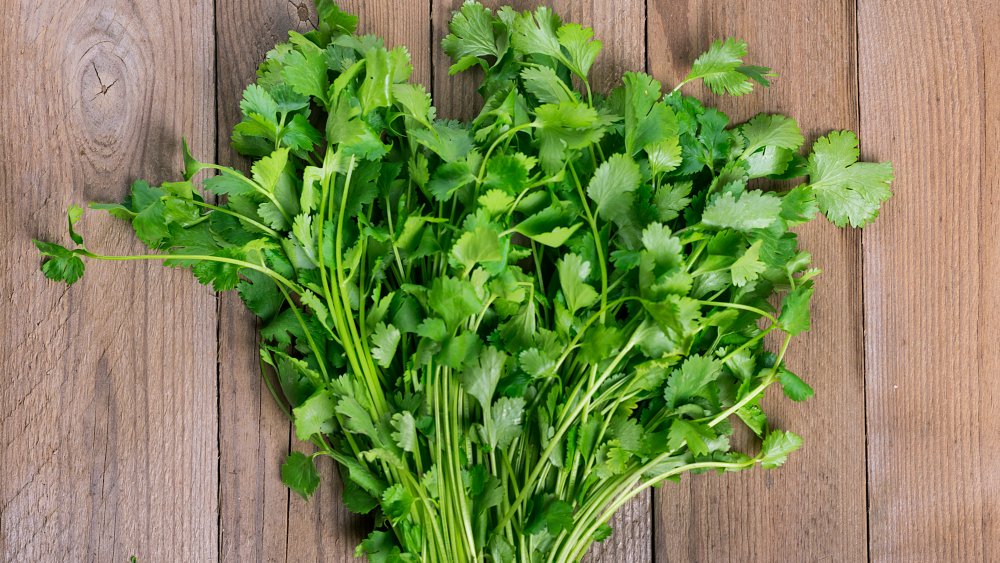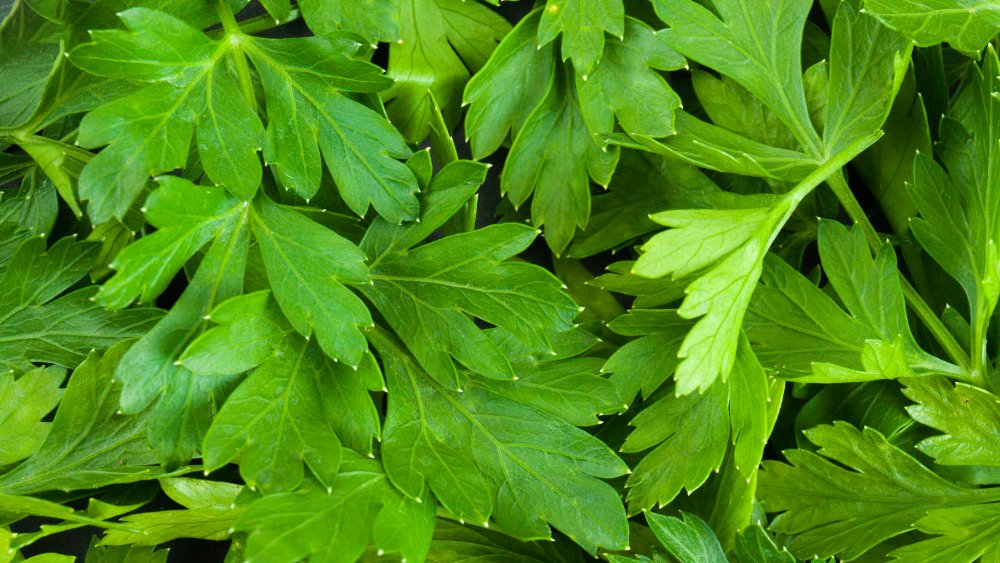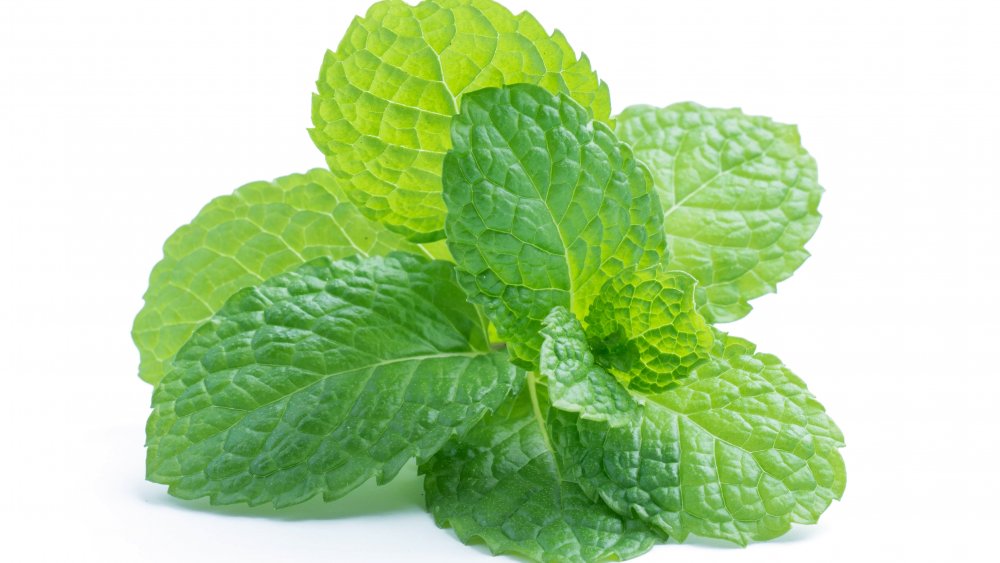Here's What You Can Substitute For Cilantro
Cilantro, like so many other foods, is one of those things that either you love or you hate — but, with cilantro, there's an actual scientific reason why you fall on whatever side of the fence you're on. There's a specific gene carried by certain people — OR6A2, it's called — that makes them extra-sensitive to certain chemical compounds that give cilantro its flavor. In fact, many who carry this gene seem to find that cilantro tastes a lot like soap (via Real Simple).
If you, or one of those you're feeding, is a "soap taster," has a cilantro allergy, or you just can't find or don't want to use the stuff, what can you use in its place? While there are no other herbs or spices with cilantro's unique flavor, substitutes recommended by Spiceography include Thai basil, Italian parsley, and mint leaves.
Using Thai basil as a cilantro substitute
Basil comes in over 150 different varieties, according to the in-the-know horticulture experts at Iowa State University, but the one variety that's your best bet for a cilantro stand-in is Thai basil. This herb, which can be found at many Asian grocery stores and sometimes at farmers markets, has a flavor that includes both citrus and licorice notes. Some of the dishes Thai basil is best suited for include spicier fare such as curries and stir-fries. Like cilantro, basil should be added toward the end of a dish's cooking time, as is does not stand up well to long heat exposure.
Using Italian parsley as a cilantro substitute
Parsley and cilantro may look like close cousins — in fact, in the grocery store, you often have to take a good look before being sure which one you're buying. That doesn't mean their taste is similar, though. Parsley has a slight bitterness to it, which Spiceography says can be masked with a small amount of honey or sugar. It is also recommends that a little basil or oregano be added along with parsley to better mimic cilantro's flavor, but Real Simple suggests adding lemon or lime juice instead to give your parsley a bit more zip.
Using mint as a cilantro substitute
Mint may be kind of an out-of-the-box suggestion, but fresh mint leaves and stems may often be found in the same types of Asian dishes that feature cilantro, such as being used atop a bowl of pho. If you don't want your mint to taste so, well, minty, Spiceography again has a helpful hint to help you overcome that tendency: A little splash of balsamic vinegar mixed in with chopped mint leaves will help to eliminate that cool menthol taste. If you are just using mint in place of cilantro for garnishing purposes, no vinegar will be needed, but you might want to balance its sweetness with a lime wedge.



